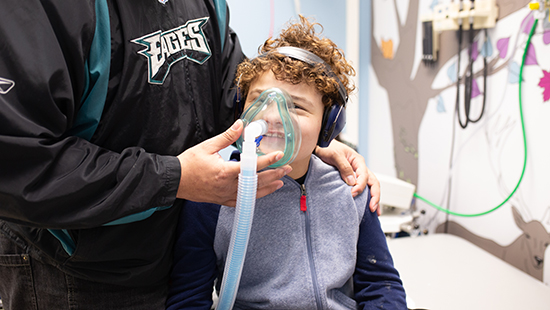Dedicated to Sparing Children Pain

Julia Rosenstock, MD, attending pediatrician at MWPH, is a driving force in MWPH's innovative, comprehensive pain management program. She believes saving children unnecessary pain just makes sense.
Effects of Childhood Pain Lasts a Lifetime
"In health care, broadly speaking, we certainly undertreat children's pain. That is problematic, because repeated pain is traumatic and teaches a developing brain to be more sensitive to pain," Dr. Rosenstock said. "So in effect, we are creating people who experience more pain, are more at risk for chronic pan, and are more sensitive to pain. But that's not how it has to be – there are lots of things that health care providers can do to make it better."
"Laughing Gas" is Safe and Effective
One example of available pain management options that are safe for children is nitrous oxide. Thanks in part of Dr. Rosenstock's efforts, MWPH now offers nitrous oxide at no charge to patients as part of our comprehensive pain management options. Nitrous oxide is a gas that is mixed with oxygen and inhaled to case a state of decreased anxiety and pain. It can be given with a mask to help make medical procedures easier to tolerate. It is often called "laughing gas."
"Dentists have been giving nitrous oxide for more than 100 years to great effect. It's an inhaled gas that works really well to decrease anxiety, which is a huge component of pain," Dr. Rosenstock noted.
There are many benefits to offering this option for children who are having procedures or interventions. The child experiences less worry and less pain. Additionally, the treatment team can get the procedure done more quickly because the child is calm, which also improves the experience for the child and family.
Nitrous oxide is very safe and has almost no side effects, although it is not recommended for certain patients. The gas takes effect quickly and stops working as soon as the gas stops. It can also cause some amnesia of the procedure – a child might remember a procedure as taking much less time than it did, for example.
MWPH uses nitrous oxide regularly with children who are getting Botox injections or dressing changes, but any patient family can request nitrous oxide for their child. The treatment requires a soft mask to be placed on the child's face, so the child can breathe the gas. Child life specialists are available to help normalize the process.
"We have had a great response from every family we've used it with," Dr. Rosenstock said.
It is because of dedicated, compassionate providers like Dr. Rosenstock and her colleagues that MWPH continues to be at the forefront of the push to offer nitrous oxide to children undergoing procedures or interventions, as part of a multifaceted pain management strategy.
